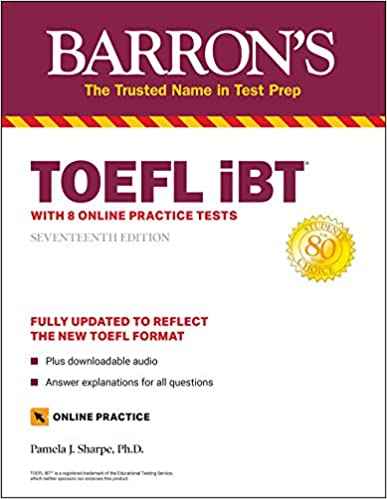What is TOEFL TPO?
ETS, the company that makes the TOEFL, offers a few different sources of official TOEFL material to practice with. One of those resources is TPO, which stands for “TOEFL Practice Online.” The TPO tests are a set of full-length practice TOEFLs that were used for real tests in previous years. There are around 40 of them, numbered TPO1, TPO2, etc., and every year four of them are available on ETS’s website—but not for free.
How Much TPO Costs (Too Much)
Each TPO test costs $45 USD. That’s a lot of money for a single test. Compare, for example, the cost of the book Official TOEFL iBT Tests, which gives you five full tests for under $30 (depending on where you buy the book). You may disagree, because you may have found TPO tests available for free on other sites. Those are illegal, pirated copies. The only place to use the TPO material legally is on ETS’s website, and they are not cheap.
So I don’t recommend using official TPO tests for normal practice. I barely recommend using them at all, in fact.
What TPO is good for
TPO tests are best used to recreate the test day experience. If you have already studied the TOEFL, including all the types of questions and the best ways to answer them, then you will want to focus on your stamina, timing, and relaxation. Staying calm and quick during the real test is very important, because the clock can cause problems for some students.
And in order to practice those real-test conditions, you should definitely be practicing on a computer. If you want to use official material, too—the best practice material—there are two ways. First, you can use the three practice tests on the CD that comes with the Official Guide. The software and the material on that CD are similar to (but not exactly the same as) current, real TOEFLs. You can get a great test-day experience with that CD.
The second way is TPO. So really, I only recommend buying a TPO test if you need test-day experience to practice with test stress, timing, and stamina, but you’ve already used all the material on the CD of the Official Guide.
TPO’s choices: timed or untimed test
When you start the TPO software, you get the options to either take your test timed, in standard test-day conditions, or to take your test untimed. If you choose the second option, you can also select extra features that you want during your test. Those features aren’t available on a real, official TOEFL—they are for people who want extra help while practicing. Of course, the real test is timed, too, so there the untimed version is not similar to a real test experience.
Here are the features:
Highlighting During the Reading Section
You can select highlight while you read, so you can easily find that text later. This is a little bit like taking notes. You can easily mark the most important ideas in the text.
Checking the Answer
Yes, this is exactly what you think. While taking the test, you can check what the correct answer is.
Marking Guesses
If you are unsure of a question, you can mark it with a small “guess” checkmark. That way, you can return to it later to think more about your answer, after you have answered the easier questions.
Pausing the Test
This is the most important feature. If the test is untimed, you can simply stop it at any time and then restart it later. The test is four hours long, so that can be useful.
Why timed is better
For $45, you can easily buy lots of material to analyze closely and think about over a long time. All of the extra features in the “untimed” section may help you if you are just learning TOEFL strategy and analyzing the test, but that’s not what TPO is good for. If you buy a TPO test, then it should only be because you want to experience a real, full, TOEFL test. And if that’s the case, then “timed” is the only way. It may be convenient to see an answer any time you want or pause the test any time, but you won’t have that convenience on your real test. So only give it to yourself when you are using the cheaper material, when it’s not so wasteful.
The score report
Besides the high price of a TPO, there is one other major downfall: the scoring. The reading and speaking scores are the most accurate you can find (especially if you take the timed test), but both the speaking and writing are scored by machines, and those automatic graders are terrible, especially the speaking grader.
First, they pay no attention to the content of your answer. I have written essays on topics that are completely different from the topics in the questions and received almost full points (28s or 29s) from the automatic essay grader. On a real TOEFL, that would give you a score of 0. The automatic essay grader only pays attention to grammar, vocabulary, and essay length. Those are all factors that affect your real TOEFL score, but it’s more important that you communicate the ideas and explanations well. It’s possible to skip the communication and only have correct grammar on a TPO, but get a high score. Similarly, it’s possible to communicate very well, but make a few grammar errors and have a somewhat short essay. And in that case, the TPO software will give you a grade that’s unrealisitcally low.
While the writing grader is flawed, the speaking grader is absolutely useless. It seems to score at random. My guess is that it is very picky about microphone quality, but ETS’s software isn’t very good with microphones. It may insist on using the microphone inside your laptop, for example, instead of an external microphone with higher quality. Whatever the reason, it has given me 15-20 points more than once, and I am a native-speaking TOEFL teacher who scores 30 on the real TOEFL. To be honest, though, this isn’t a surprise. If you want to understand why an automatic grader can’t possibly give a good score, try reading the automatic subtitles on youtube.





